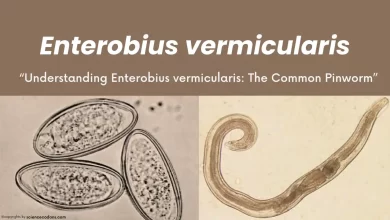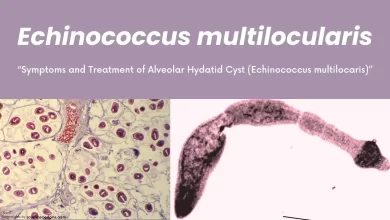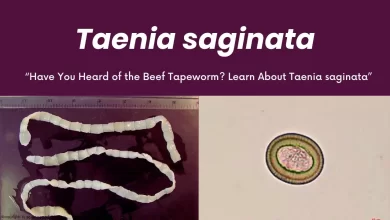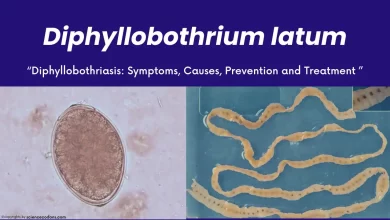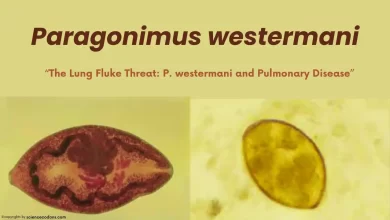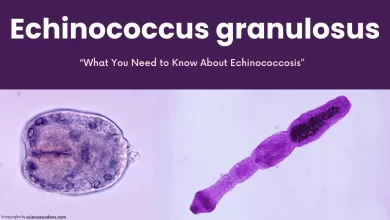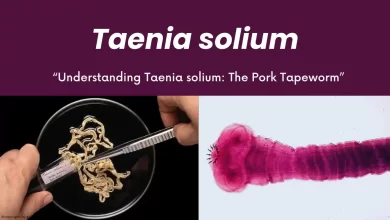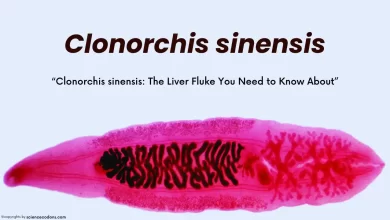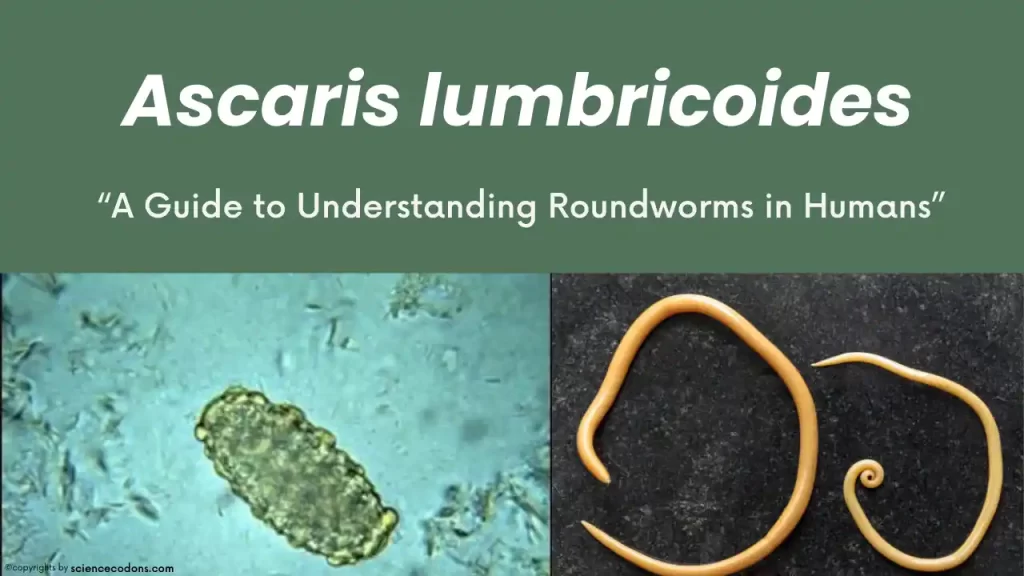
Ascaris lumbricoides is a type of nematode, or worm, that infects humans. These nematodes are often referred to as tubular or threadworms. This particular worm is quite common and can grow very long. It can create clusters of worms in the human digestive system, leading to digestive blockages. In severe cases, the worms can even exit the body through the mouth and nose.
What is A. lumbricoides? [Morphology & Characteristics]
The name ‘lumbricoides’ (meaning earthworm) was given due to its visual resemblance to an earthworm. Darwin first demonstrated the infectious nature of the egg containing the larva for humans in 1823. In 1916, Stewart identified a cardiac-pulmonary migration in the worm’s life cycle, which is necessary for the worm to mature. This nematode is the second most common in humans, following Enterobius vermicularis (oxyuris).
Ascaris lumbricoides is the largest human digestive nematode. Female worms can grow up to 35 centimeters long and 4-6 millimeters wide. They are milky white in color, and their mouths usually have three simple lips. Female worms lay 200,000 yellow eggs daily.
The eggs are divided into two categories: fertile and infertile. The size of the eggs is 35 by 70 microns. Infertile eggs are more elongated and oval, while fertile ones are usually spherical or spherical to oval and are yellow. The Ascaris egg is one of the most resistant among worms, with four resistant layers. The outer layer is made of ‘albumin,’ which is protruding and sticky, followed by chitin, lipid (under chitin), and a central cellular mass in the middle.
Lifecycle and Transmission Ascaris lumbricoides
The primary host of Ascaris lumbricoides is humans. This worm resides in the small intestine of the human digestive system. The female worm excretes 200,000 eggs daily, which are immature and usually excreted into the environment along with sewage. If this sewage irrigates vegetables and fruits, the first larval stage, denoted as L1, forms within a few weeks (usually 9 to 13 days).
Approximately three weeks later, the second larval stage, or L2, forms. This stage is infectious to humans. If humans consume contaminated vegetables and fruits that have not been properly washed or cooked, they become infected. After the egg is consumed, the larva is excreted in the intestine and migrates through the bloodstream. It travels to the heart, enters the lungs, ascends from the trachea, descends from the esophagus, and re-enters the digestive system. During this circulation, it usually molts 2 to 3 times to become an adult worm. The maturation period usually occurs within 2 to 3 months. Male and female worms mate in the intestine, and female worms start laying eggs again.
| Life Cycle Stage | Description |
|---|---|
| Adult Worms | Live in the lumen of the small intestine. Females produce approximately 200,000 eggs per day, which are passed with the feces. Adult worms can live 1 to 2 years. |
| Eggs | Passed with feces. Unfertilized eggs may be ingested but are not infective. |
| Larvae | Develop to infectivity within fertile eggs after 18 days to several weeks. Swallowed after infective eggs are ingested. Hatch invade the intestinal mucosa and are carried via the portal circulation to the lungs. Mature further in the lungs (10 to 14 days), penetrate the alveolar walls, ascend the bronchial tree to the throat, and are swallowed. |
| Development into Adult Worms | Occurs upon reaching the small intestine. Takes between 2 and 3 months from ingestion of infective eggs to oviposition by the adult female. |
What are the symptoms of Ascaris disease?
The symptoms of Ascaris lumbricoides infection, or ascariasis, can be summarized in two stages: the larval and maturity stages.
Larval stage
In the larval stage, respiratory symptoms include lung bleeding, pneumonia, cough, shortness of breath, chest pain, and fever. This set of symptoms is known as ‘Loeffler’s syndrome’. This syndrome is self-limiting and usually resolves on its own after 1 to 2 weeks (after the migration of larvae from the lung). Eosinophilia is common in it (40%). Charcot Leiden crystals, which are the result of eosinophil degradation, may be seen in the patient’s sputum or the lung secretions themselves.
Maturity stage
In the maturity stage, we usually see a decrease and loss of protein in the patient, which causes the symptoms of Kwashiorkor disease. The patient suffers from ascites or water belly. If the number of worms is high (like a tangled ball), the patient suffers from intestinal obstruction. Other symptoms include abdominal pain, digestive symptoms such as loss of appetite, nausea, pancreatitis, appendicitis (the worm may enter the appendix), obstructive jaundice, peritonitis (Peritonitis), cholangitis, neurological symptoms and sometimes worms coming out of the mouth and nose.
| Affected Organ | Symptoms |
|---|---|
| Lungs | Persistent cough, shortness of breath, wheezing |
| Intestines | Vague abdominal pain, nausea and vomiting, diarrhea or bloody stools, abdominal distention, worms in vomit or stool, malnutrition, weight loss, intestinal obstruction, severe abdominal pain, fatigue, vomiting |
Diagnosis and Treatment Ascariasis
A stool test and egg observation are used to diagnose Ascaris lumbricoides. To observe adult worms, sonography and CT scan are used. In the larval stage, we can use a sputum test and observation of larvae or Charcot Leiden crystals for eosinophilia that exists in the patient.
Infection with Ascaris lumbricoides can also be treated using the following drugs, and in very severe cases, surgery is recommended and the worms are removed surgically:
- Pyrantel pamoate at a dose of 10-20 milligrams per kilogram as a single dose SD.
- Levamizole at a dose of 2.5 milligrams per kilogram as a single dose SD
- Mebendazole, 100 mg tablets, 3 times a day for 3 or 4 days
- Substitute drugs Albendazole and Flubendazole
- Piperazine Citrate Syrup: Used to paralyze worms, which is given to the patient through a nasal tube.
Prevention and Control
Prevention strategies focus on improving sanitation, hygiene practices, and education. Washing hands, properly cooking food, and treating infected individuals can significantly reduce the transmission of A. lumbricoides
Conclusion
Ascaris lumbricoides represents a significant global health challenge, particularly in regions with inadequate sanitation. Understanding its life cycle and transmission is crucial for effective prevention and control measures. While the infection can be asymptomatic, it has the potential to cause serious health complications, especially in children. Fortunately, ascariasis is treatable with medication, and ongoing public health education, sanitation, and hygiene efforts can reduce its prevalence. Ultimately, addressing the root causes of ascariasis will contribute to the well-being of millions worldwide and is a key step toward achieving better global health outcomes.
Reference
- Houpt, Thomas A et al. “Behavioral effects on rats of motion within a high static magnetic field.” Physiology & behavior vol. 102,3-4 (2011): 338-46. doi:10.1016/j.physbeh.2010.11.028
- Essentials of Medical Microbiology by Apurba S Sastry and Sandhya Bhat
- Ascaris: The Neglected Parasite by Celia Holland
- Textbook of Medical Parasitology by C. P. Beaver, Clayton Lane
- Paniker’s Textbook of Medical Parasitology by C K Rao
